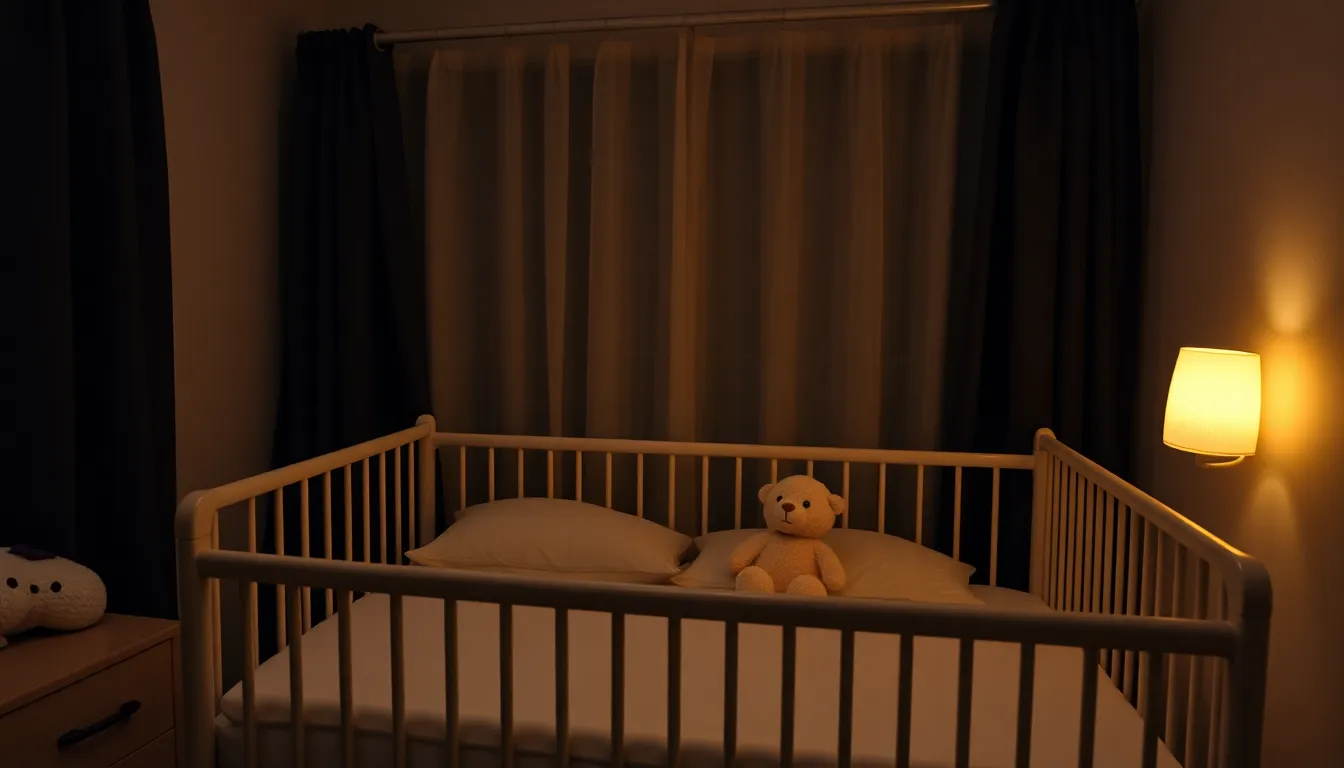Getting a baby to sleep can feel like an uphill battle for many parents. Those sleepless nights can leave them exhausted and searching for solutions that actually work. Understanding a baby’s sleep patterns and needs is crucial for creating a peaceful bedtime routine that promotes restful sleep.
From swaddling techniques to establishing a calming environment, there are numerous strategies that can help soothe a fussy little one. With the right approach, parents can transform bedtime into a serene experience, benefiting both the baby and themselves. This article explores effective methods to guide parents on their journey toward achieving better sleep for their babies.
Table of Contents
ToggleUnderstanding Baby Sleep Patterns
Understanding baby sleep patterns plays a critical role in promoting restful sleep for infants. By recognizing the unique requirements at different stages, parents can establish effective bedtime routines.
Newborn Sleep Requirements
Newborns require extensive sleep for healthy development. Typically, newborns sleep about 14 to 17 hours daily, though some may need up to 19 hours. Sleep usually occurs in short intervals lasting 2 to 4 hours, driven by their small stomachs and feeding needs. Parents should create a conducive sleep environment, incorporating dim lighting and soothing sounds to help newborns settle better.
Developmental Changes in Sleep
Developmental changes significantly impact a baby’s sleep patterns. Around 3 months, sleep cycles begin to regulate, resulting in longer stretches of sleep at night. By 6 months, many infants achieve a more established bedtime routine, often sleeping about 10 to 12 hours, with shorter daytime naps totaling around 3 to 4 hours. As babies grow, changes in sleep architecture occur, including transitions from REM to deeper sleep phases, influencing nighttime sleep behavior. Parents should adapt to these changes to foster a supportive sleep environment throughout the various stages of development.
Techniques for Getting Baby to Sleep

Implementing effective techniques helps parents support their baby’s sleep needs. Establishing a consistent routine and creating a conducive environment plays a crucial role in promoting better sleep.
Establishing a Bedtime Routine
Creating a bedtime routine helps signal to the baby that it’s time for sleep. Setting a specific time for bed, followed by calming activities, forms a sleep association. Examples of soothing routines include:
- Bathing: Giving a warm bath can relax the baby.
- Reading: Reading a gentle story promotes relaxation.
- Lullabies: Singing or playing soft music helps create a calming atmosphere.
- Dim Lights: Reducing light intensity prepares the baby for sleep.
Consistency is key; following the same order of activities every night strengthens the sleep association and makes it easier for the baby to drift off.
Creating a Sleep-Friendly Environment
A sleep-friendly environment enhances a baby’s ability to sleep soundly. Setting up the nursery involves specific considerations:
- Darkness: Using blackout curtains minimizes light disturbances.
- Quietness: Keeping the nursery quiet or using white noise machines can block disruptive sounds.
- Comfortable Temperature: Maintaining a comfortable temperature around 68 to 72 degrees Fahrenheit promotes better sleep.
- Safe Sleep Space: Ensuring the crib is clear of toys and blankets supports safe sleep practices.
A well-prepared environment helps the baby feel secure and relaxed, facilitating restful sleep.
Addressing Common Sleep Issues
Addressing common sleep issues can help improve a baby’s sleep quality. This section explores two prevalent challenges: colic and gas, as well as teething discomfort.
Colic and Gas
Colic and gas can significantly disrupt a baby’s sleep. Colic typically manifests as prolonged crying, often occurring in the evening. Strategies for alleviating colic include holding the baby in a comforting position, utilizing gentle rocking motions, or trying swaddling techniques. Gas relief might involve burping the baby more frequently during feedings or adjusting feeding positions. Some parents find success with tummy time, which can help with digestion and relieve discomfort. In some cases, pediatricians may recommend specific over-the-counter remedies to ease digestive issues.
Teething Discomfort
Teething discomfort affects many infants, leading to restless nights. Symptoms may include excessive drooling, irritability, and swollen gums. To soothe teething pain, parents can offer chilled teething rings or cloths for babies to gnaw on. Gentle gum massages can also provide relief. Maintaining a calming bedtime routine remains vital, as it signals the baby that sleep is approaching, even amidst discomfort. In some instances, pediatricians might recommend age-appropriate pain relief medications for severe cases.
Tips for Parents to Manage Sleep
Managing a baby’s sleep can be challenging for parents. Taking care of themselves is equally vital for maintaining a nurturing environment.
Taking Breaks and Self-Care
Taking breaks helps parents recharge and manage stress. When parents rest, they increase their ability to support their baby’s sleep needs. Schedule short breaks throughout the day to engage in relaxing activities, such as reading or walking. Share nighttime duties with a partner or family member to ensure both parents have time to rest. Prioritizing self-care promotes mental well-being, enabling them to create a calmer bedtime atmosphere for their baby.
Seeking Professional Help
Seeking professional help is beneficial when sleep challenges persist. Pediatricians can address important factors affecting a baby’s sleep. They can provide insights on sleep habits and suggest solutions tailored to specific concerns, such as sleep apnea or digestive issues. If parents notice severe sleep disturbances or extreme fussiness, consulting with a pediatric sleep specialist can offer additional strategies and reassurance. Professional guidance ensures parents navigate sleep issues effectively.
Getting a baby to sleep can be a challenging journey for parents. By understanding their baby’s unique sleep patterns and needs, parents can create a nurturing environment that promotes restful sleep. Establishing a calming bedtime routine and addressing common sleep disruptions are vital steps in this process.
Prioritizing self-care for parents is equally important as it contributes to a healthier sleep atmosphere for the baby. When parents feel rested and supported, they’re better equipped to handle the ups and downs of sleepless nights. With patience and consistency, parents can help their babies develop healthy sleep habits that will last a lifetime.



